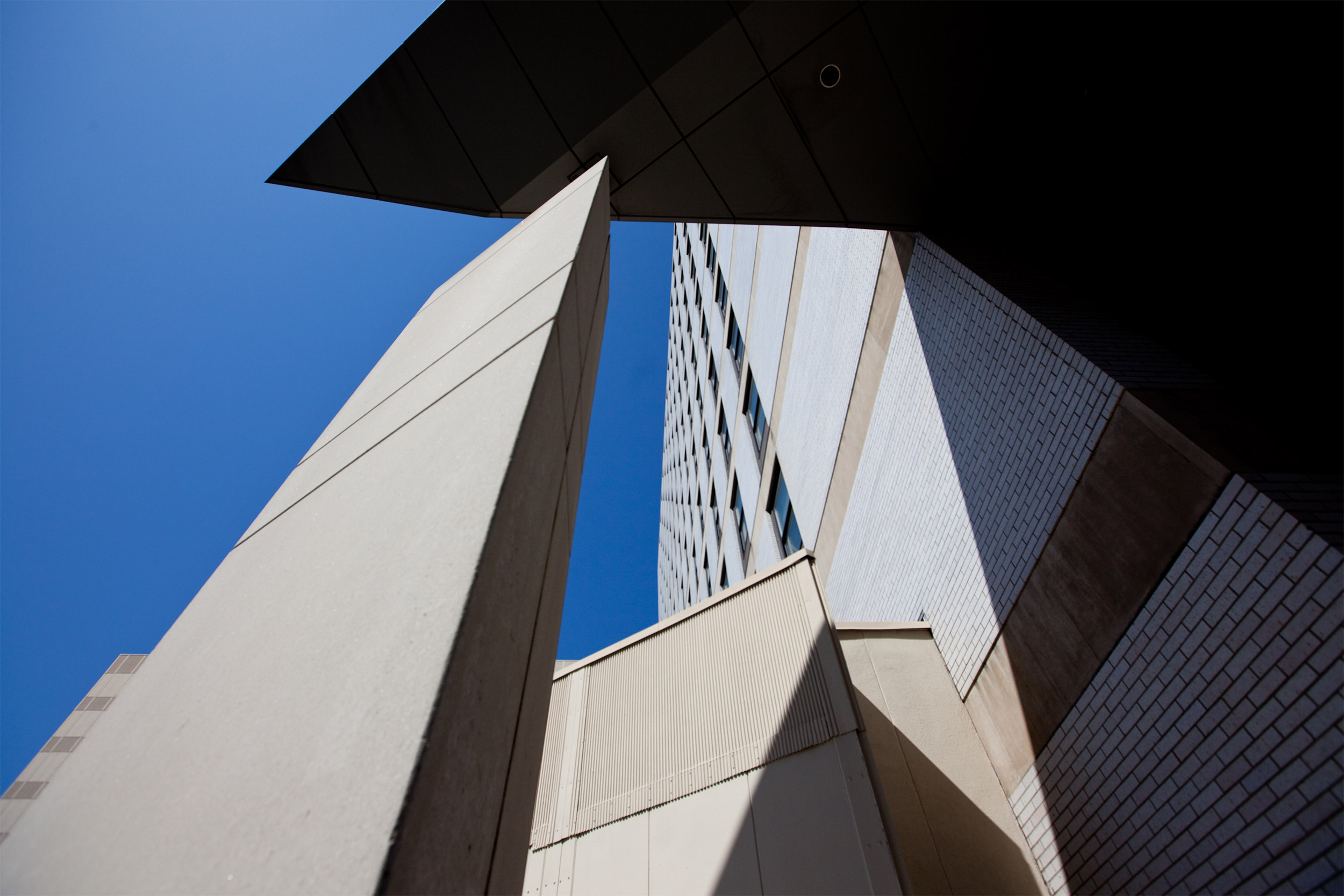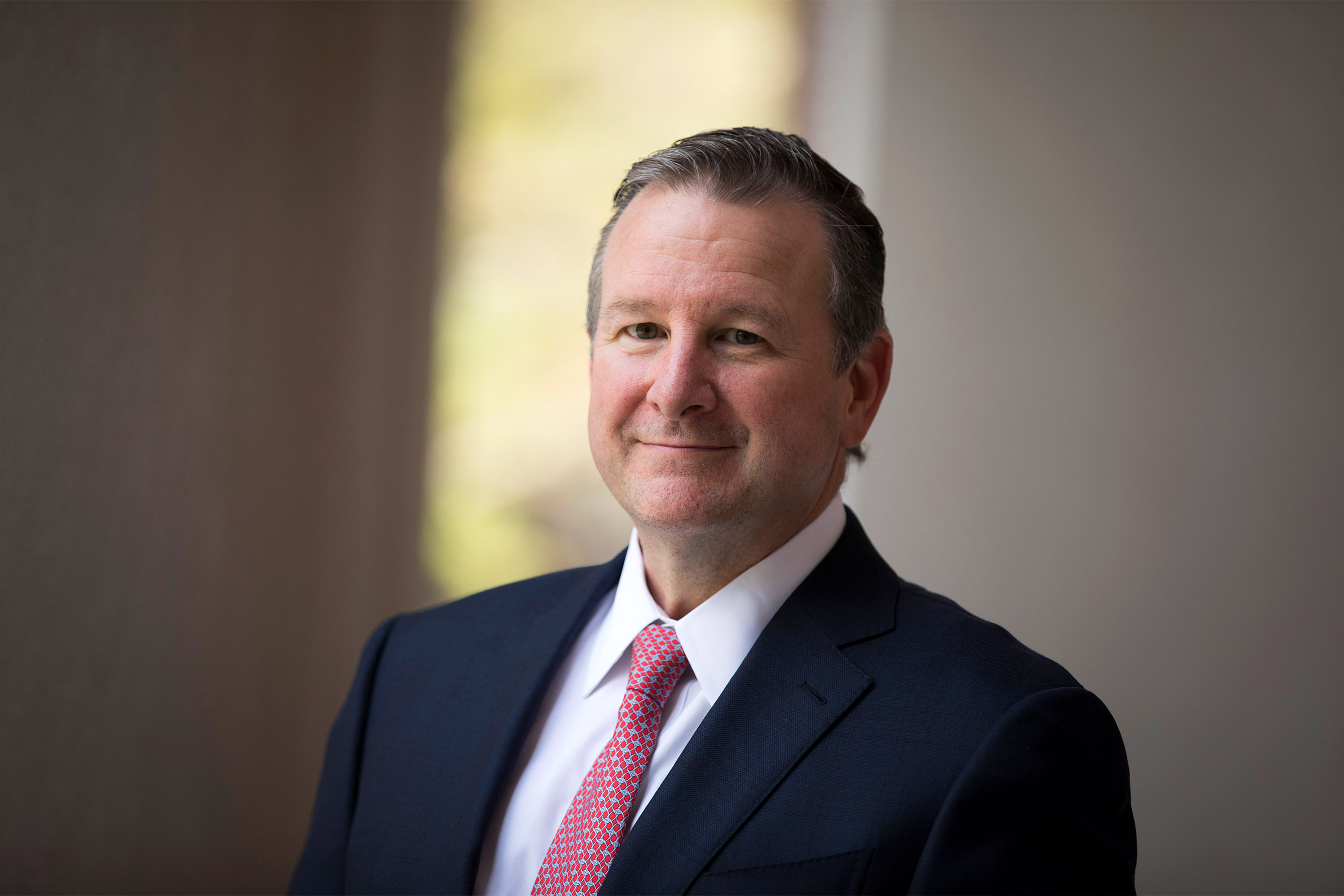
Longwood Medical area, Harvard University.
Rose Lincoln/Harvard file photo
Reopening research operations
Vice Provost Rick McCullough discusses the decision to shut down labs and outlines the plans to ensure a safe return to normal operations when the time comes
Harvard shut down the vast majority of its laboratory research projects in March as part of its plans to close campus and move classes online amid the mushrooming COVID-19 pandemic. Shortly after, Massachusetts Gov. Charlie Baker issued a stay-at-home advisory for the entire state. This week Baker previewed plans to lift restrictions in four distinct phases once he determines it is safe to begin doing so. Harvard has similarly been working for weeks on its own reopening plans. These preparations include work by the Laboratory Reopening Planning Committee, headed by Vice Provost for Research Rick McCullough. The Gazette spoke with McCullough to learn more about Harvard’s initial decision to shut down its labs, the effects this has had on research across its campuses and Greater Boston, and how the University plans to ensure a safe reopening.
Q&A
Rick McCullough
GAZETTE: Can you set the landscape for us in terms of how COVID-19 has affected laboratory-based research activities at Harvard?
McCULLOUGH: Obviously it has impacted the laboratory research enterprise in an extremely dramatic way. We shut down nearly all research operations by mid-March. From that point forward, only essential personnel were allowed to enter the labs. This included workers performing COVID-19 research that could have a near-term impact and workers who needed to ensure the continuity of absolutely critical research functions.
Overall, the density of people who are currently in labs at Harvard is very small. I’d say it’s somewhere between 1 and 5 percent of the normal workforce in Harvard’s research laboratories. And all of these individuals are at work under very controlled conditions, with appropriate personal protective equipment and exercising the necessary biosafety precautions.
GAZETTE: How were you able to make the decision to shut down in March?
McCULLOUGH: We wanted to send a strong message that the health and safety of our staff, students, postdocs, and professors was, and remains, our top priority. I’m delighted by the positive reaction we heard not only from the Harvard community but also from the Greater Boston community, and the academic community at large.
We’re very fortunate to have a remarkable group of experts at our fingertips here at Harvard, across the natural sciences, in public health and in medicine, so we were able to understand what was coming with regard to the spread of this virus, and lean on their expertise to guide us in our decisions.
GAZETTE: Can you quantify the impact that shutting down research has had on Harvard and the scientific community more broadly over the past two months?
McCULLOUGH: At Harvard, we spend over $1 billion per year in research. In the state of Massachusetts, annual research expenditures at its colleges and universities exceed $4 billion. So, the impact on the economy is significant. Of course, the slowing down of discovery in science and technology could have lasting impact on our understanding of the world, our ability to address some of its most pressing challenges, and growing aspects of the technology-driven economy.
“Overall, the density of people who are currently in labs at Harvard is very small. I’d say it’s somewhere between 1 and 5 percent of the normal workforce in Harvard’s research laboratories.”
GAZETTE: The most pressing challenge facing us today, of course, specifically relates to the current pandemic. Some of the few labs that remain open at Harvard are pursuing research related to COVID-19. Tell us more about some of those projects.
McCULLOUGH: That’s right. Soon after the initial, and critical, shutdown of research operations, we quickly set in motion opportunities for research directly aimed at learning more about COVID-19. Already, projects at Harvard and with community partners are beginning to set the groundwork for tests and therapies to be able to best identify, and then treat, the virus.
One such project is the newly formed Massachusetts Consortium on Pathogen Readiness, an effort led by Harvard Medical School, which aims to address both the immediate and long-term implications of the pandemic. Through the efforts of this consortium, researchers across Boston are hard at work looking to find ways to slow the spread of COVID-19, while also laying the groundwork for dealing with future pandemics that will inevitably arise.
GAZETTE: Certain parts of the country are starting to reopen, some more slowly than others. Last week, Provost Alan Garber wrote to the Harvard community about the formation of a Laboratory Reopening Planning Committee to ready Harvard for the time when research operations can safely begin again. Tell us about the makeup of this committee, of which you are the chair, and what you are discussing at this stage.
McCULLOUGH: We’ve just finished writing and adopting a University-wide Research Laboratory Re-Entry Plan, which the Schools have started sharing with their faculty this week. It details how we can implement a phased and safe reopening of research facilities, when the time is right.
There are 20 of us on the committee, including leadership from Harvard’s teaching hospitals and its Schools in medicine, science, public health, and engineering, as well as faculty and senior administrators in areas such as compliance and environmental safety. It’s an impressive group of experts who are spending a significant amount of time planning for a responsible reopening, basing their decisions on the collective expertise from multiple fields of practice.
Although this committee was focused on the specific circumstances of laboratories, we intended much of our work to be applicable, with suitable modifications, to other research facilities, such as libraries and museums. The health and safety considerations apply throughout the University, even though details of implementation may vary across different settings.

“We will look to the state and to the cities of Cambridge and Boston to tell us when we can start to reopen our research facilities. We aim to be ready to open as soon as possible, but this is for our planning purposes only,” said Vice Provost for Research Rick McCullough.
Stephanie Mitchell/Harvard file photo
GAZETTE: Do you have a sense as to when Harvard’s labs will reopen? Is there a timeline in mind or certain benchmarks that need to be reached?
McCULLOUGH: We will look to the state and to the cities of Cambridge and Boston to tell us when we can start to reopen our research facilities. We aim to be ready to open as soon as possible, but this is for our planning purposes only. There is a great deal of internal preparation necessary for Harvard to be able to open its labs safely — from acquiring the necessary personal protective equipment to adapting physical spaces so that they align with public health guidance. This process takes time, but we have made significant progress toward reopening once we receive approval from local and state authorities and the necessary resources are acquired and in place.
The committee’s document is meant to establish clear and consistent guiding principles for the conduct of research in the era of COVID-19, to define operational protocols and precautions that minimize risk or viral transmission in a laboratory/research environment, and to provide examples of how the physical and temporal space of laboratories might be organized to enact these protocols in accord with these principles. It is meant to be a living document that will continue to evolve and coincide with the recommendations of local and state government, as more information becomes available.
GAZETTE: What are some of the existing research practices that can help inform a safe reopening of labs?
McCULLOUGH: We feel that that reopening research is something that can be done safely for multiple reasons. They include the fact that we have considerable control over the density of people in the lab; that people who work in labs in campus research are used to using personal protective equipment; and many of these individuals also have significant experience working in environments with all sorts of exposure possibilities.
GAZETTE: Are there additional considerations being offered by the committee for how to reopen?
McCULLOUGH: We’ll continue to encourage those researchers who can work remotely to do so; for those performing on-campus research, we’ll ask them to maintain social distancing policies. In addition, we’ll control access to labs, limit the density of researchers, and encourage shift work, and require personal protective equipment such as surgical face masks to be worn in our buildings. We’ll bring people back in phases, using 20 percent density as a guideline for the development of lab-specific plans, and slowly monitor and increase that guidance until we return to full capacity. As there is no uniformity across physical lab spaces, we are collaborating with PIs [principal investigators], who are developing phased, lab-specific plans for approval.




